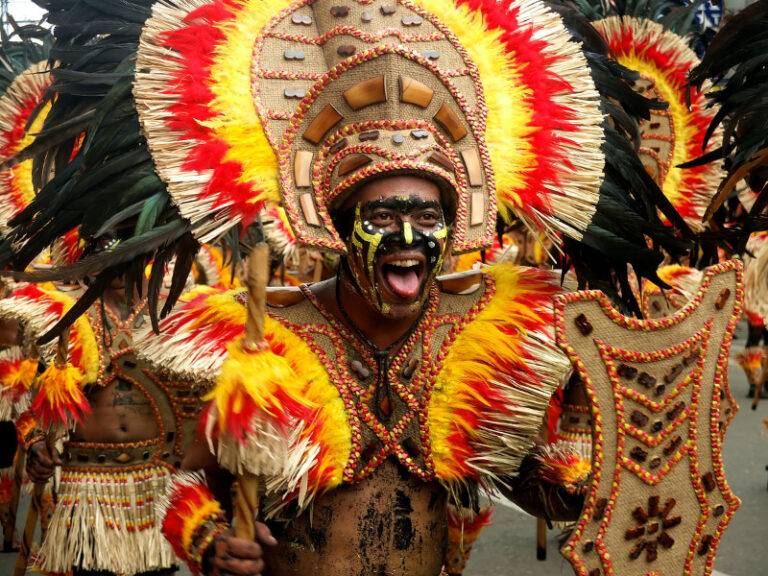Sandugo Festival: Bohol’s Beautiful Spectacle
In the heart of the Philippines, Bohol comes alive in a burst of vivid hues each year with the Sandugo Festival. This event, which translates to “one blood”, commemorates a 16th-century blood compact between Spanish explorer Miguel López de Legazpi and Datu Sikatuna, the chieftain of Bohol.
The festival lasts for a month and attracts visitors worldwide. It symbolizes community, strength, shared heritage, and Filipino culture. It also involves street dances, fair trades, historical reenactments, and beauty pageants.
In this post, we’ll dive into the vibrance of the Sandugo Festival, exploring its rich history, cultural significance, and the lively spirit that makes it Bohol’s most beautiful spectacle.
When Is Sandugo Festival Celebrated?
The Sandugo Festival happens every year in July in Bohol, Philippines. The main events typically occur towards the end of the month. The street dancing competition, a festival highlight, usually takes place on the third or fourth Sunday of July.
Dates can change each year, so check the current year’s schedule if you’re planning to join or visit. The festival usually includes events like beauty pageants, sports competitions, cultural shows, and trade fairs, all leading up to the grand parade and street dancing competition.
Sandugo Festival Description

Every year in July, the city of Tagbilaran in Bohol, Philippines, bursts into a colorful, month-long celebration known as the Sandugo Festival. This event commemorates the historic sandugo or blood compact between Spanish explorer Miguel López de Legazpi and Datu Sikatuna, chieftain of Bohol, in 1565. This pact signifies the peace and unity between the Spaniards and Filipinos.
“Sandugo”, a term in the local dialect that translates to “one blood”, mirrors the bond created by this blood pact. The festival includes lavish activities such as cultural shows, traditional music and dance performances, art exhibitions, and sports events.
The street dancing competition, the festival’s highlight, features numerous groups dressed in vivid costumes, performing intricate dance sequences to the rhythm of native music. These performances often narrate tales of Bohol’s history and culture. The dancers, moving harmoniously, embody the unity at the heart of the Sandugo Festival.
The event also includes a reenactment of the blood compact, a Miss Bohol Sandugo beauty pageant, trade expos featuring local products, culinary festivals showcasing traditional Filipino dishes, and a marathon. The festival then draws to a close with a grand procession and fireworks display, infusing the city with hues and vigor.
At its core, the Sandugo Festival isn’t just a historical celebration, but also a cultural spectacle showcasing the heritage, creativity, and spirit of the Boholanos. It serves as an occasion for the people of Bohol and visitors worldwide to show unity and respect for their shared history.
Sandugo Festival Costume

In the Sandugo Festival, participants dress in vibrant traditional Filipino costumes reflecting the rich cultural heritage of Bohol. The costumes are a major highlight of the festival. They also display the locals’ creativity and craftsmanship.
During the street dancing competition, performers often wear outfits inspired by native Filipino clothing mixed with influences from Spanish colonial attire. These outfits serve as a nod to the historical event the festival commemorates.
Men usually wear elaborate costumes resembling the Spaniards. On the other hand, women often wear colorful Maria Clara ensembles, which include the baro’t saya (blouse and skirt), sometimes with butterfly sleeves, and panuelo (neck scarf).
Additionally, these costumes often come from indigenous materials adorned with intricate patterns, beadwork, and sequins. The vibrant colors used, such as red, blue, yellow, and white, symbolize different aspects of Boholano life and culture. In some cases, participants also wear headdresses and accessories made of feathers, beads, and native materials to add to the overall visual impact of their performance.
Each costume in the Sandugo Festival is not just a piece of clothing but also a testament to Bohol’s rich historical and cultural tapestry. Through these costumes, the performers communicate stories of their heritage, express their creativity, and bring to life the history and spirit of the sandugo.
Sandugo Festival Place of Origin

The Sandugo Festival’s place of origin is the city of Tagbilaran, the capital city of the province of Bohol, in the Central Visayas region of the Philippines.
Bohol is an island province known for its natural beauty, including the famous Chocolate Hills, pristine white beaches, and diverse wildlife. It’s also home to one of the smallest primates in the world, the Philippine Tarsier.
Tagbilaran City is a bustling urban center where the Sandugo Festival takes place. Despite this, it preserves its rich cultural heritage and history. The city was home to the historic blood compact between Spanish explorer Miguel López de Legazpi and Bohol’s chieftain Datu Sikatuna in 1565.
The Blood Compact Shrine, a major landmark in the city, celebrates this significant event. It marks Bohol’s place in the history of the Philippines. Tagbilaran City is thus not only the geographical origin of the Sandugo Festival but also the historical and cultural heart of this significant event.
Sandugo Festival History

The history of the Sandugo Festival can be traced to the historical event that happened in 1565, known as the blood compact or sandugo. This event marked the first treaty of friendship between the Filipinos and Spaniards, specifically between Miguel López de Legazpi, a Spanish explorer, and Datu Sikatuna, the chieftain of Bohol.
The blood compact involved the participants making a small cut on their arms, collecting the blood into a cup filled with wine, and then each drinking from the cup. This symbolic act, from which the term “sandugo” (meaning “one blood”) came, signified unity and a bond of friendship. The historic event took place on the shores of Bohol. It’s also considered one of the first diplomatic relations between the Philippines and Spain.
In 1989, the local government of Bohol started to commemorate this significant event through the annual Sandugo Festival, celebrated throughout July. The festival highlights the history, culture, and tradition of the Boholanos through various activities such as street dancing, reenactments of the blood compact, beauty pageants, and trade fairs.
The festival has grown over the years, attracting visitors not only from around the Philippines but also from all over the world. During this time, the city of Tagbilaran transforms into a vibrant hub of activities, showcasing the best of Bohol’s culture, heritage, and history.
Delicacies in Bohol You Shouldn’t Miss
Food makes a trip to Bohol worth it. From restaurants and cafes to busy streets, you may taste tons of delicacies.
There are many must-try delicacies, but on this list, we’ve selected some of the local cuisine’s most well-liked dishes in Bohol. Pro tip: taste all of them for a more unforgettable trip.
Peanut Kisses
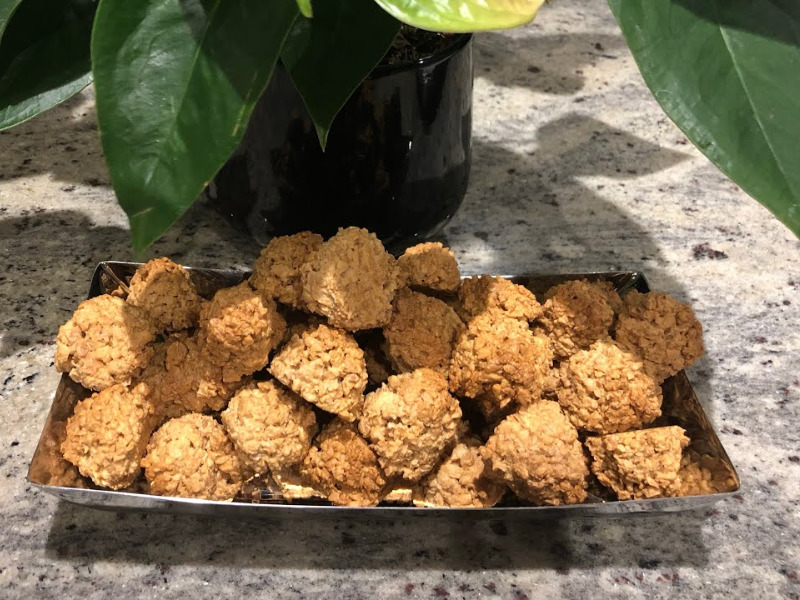
These delightful treats are one of Bohol’s most famous products. Shaped to resemble the Chocolate Hills, these sweet morsels feature finely ground peanuts and egg whites. It also boasts a perfect balance of sweet and nutty flavors.
Additionally, peanut kisses are a must-have souvenir known for their distinctive, rich taste and crunchy texture. You can also enjoy them as a snack during your day trip or as pasalubong for your loved ones back home.
Kalamay
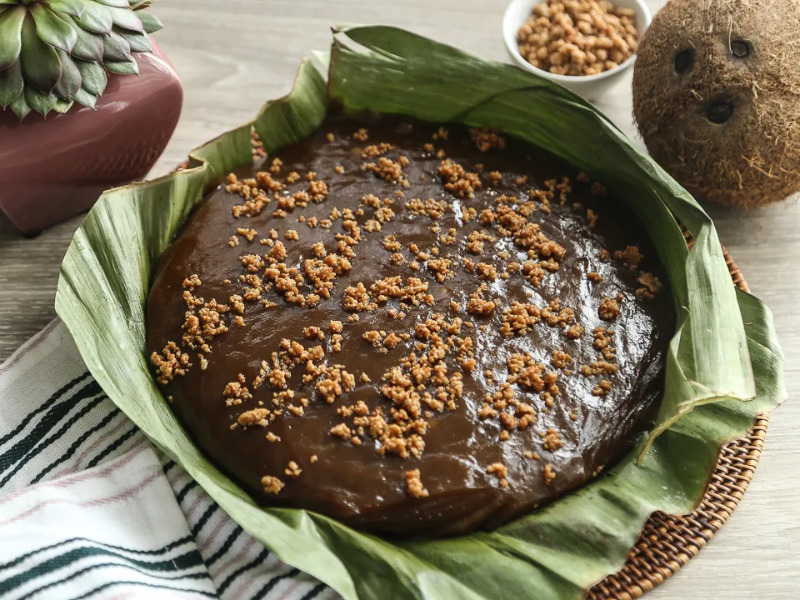
A favorite dessert and pasalubong from Bohol, kalamay is a sticky sweet delicacy that Boholanos are proud of. The ingredients include dessert staples like coconut milk, brown sugar, and glutinous rice.
However, continuously mixing these components until they become a thick, sticky paste requires time and patience. This results in a delectable and unique sweet treat. Traditionally, kalamay comes in a “lukay,” a container made from coconut shells sealed with red bands made of woven coconut leaves.
Kakanin
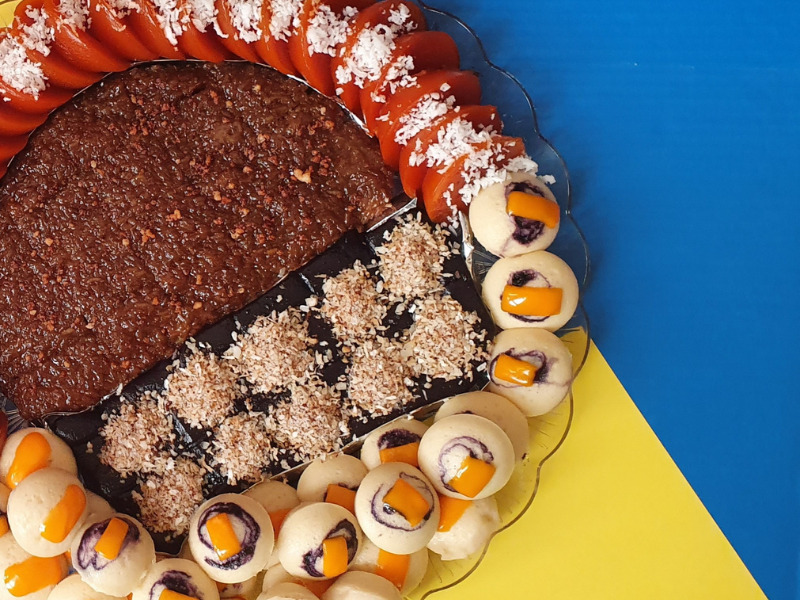
The term kakanin refers to Filipino rice-based sweets and treats. In Bohol, they have their versions of these, including bibingka (rice cake with coconut curd topping baked in clay pots), suman (glutinous rice cake wrapped in banana leaves), and puto (steamed rice cake). Each kakanin features a unique taste and texture, but all are well-loved parts of the Filipino culinary experience.
Fresh Seafood
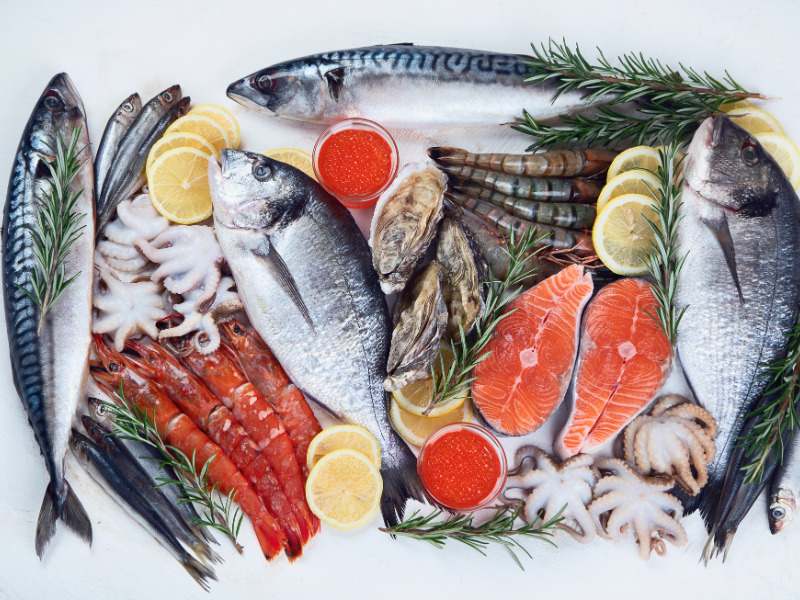
Being an island province, Bohol boasts an abundant supply of seafood. Expect to enjoy a variety of fresh catches prepared in different ways― grilled, stewed, or even raw (Filipino-style ceviche known as kinilaw). Among the must-try are their fresh prawns, lobsters, crabs, and various fish.
Lechon de Bohol
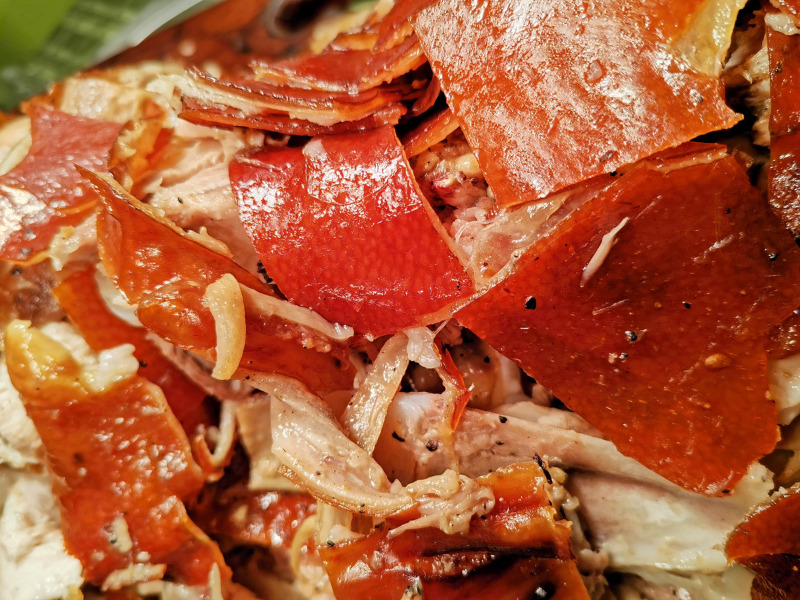
A festival or a grand family occasion in the Philippines isn’t complete without lechon. This dish features a whole pig seasoned and stuffed with herbs. Locals then roast it over an open fire for several hours. This results in crispy skin and juicy, flavorful meat. The lechon from Bohol, known as Lechon de Bohol, features a unique style and flavor that differentiates it from other regions.
Chicharon
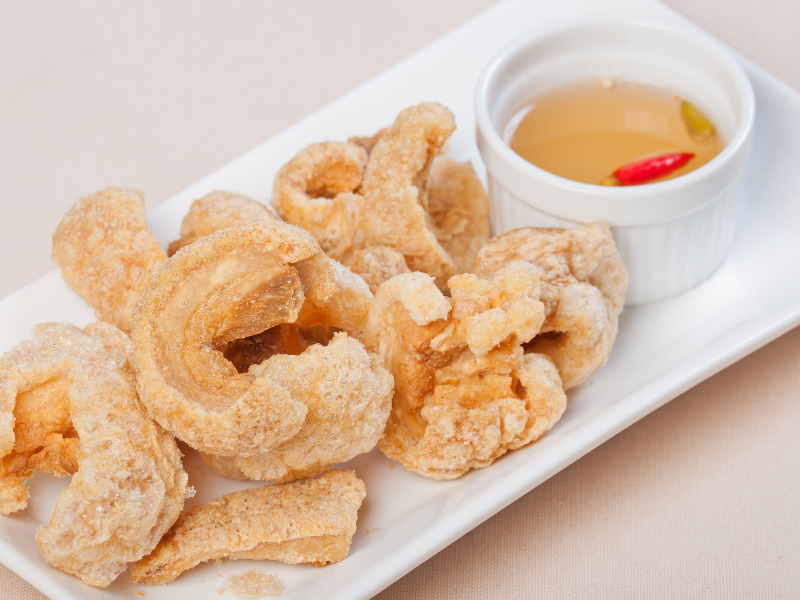
Pork cracklings or chicharon are a favorite snack all over the country. The Boholano version often comes with a spicy vinegar dip or as a topping on local dishes. It also serves as the perfect crunchy companion to cold soda or beer.
Broas
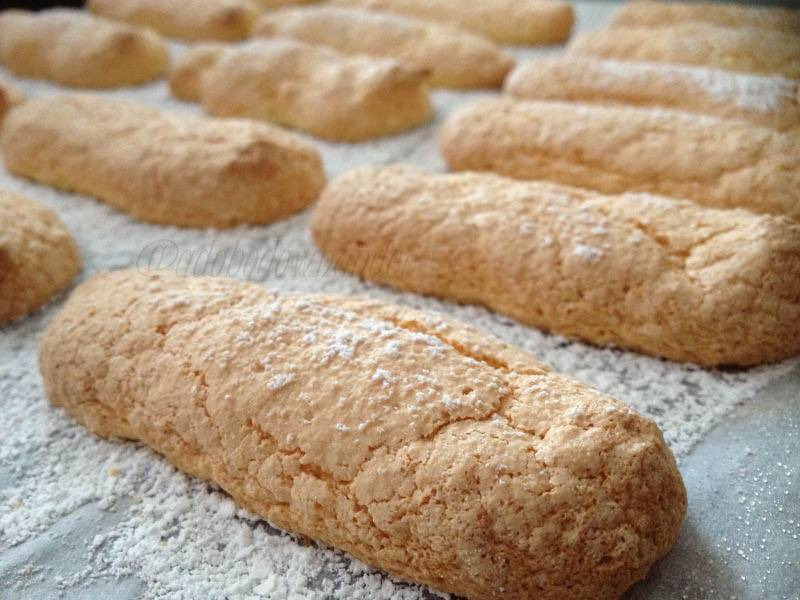
Also known as ladyfingers, broas refers to sweet, soft biscuits made from egg yolks, sugar, and flour. Locals bake them until lightly browned and slightly crunchy on the outside but soft and chewy on the inside. These treats from Oslob, a town in Bohol, have exceptional taste and texture.
Rellenong Alimango
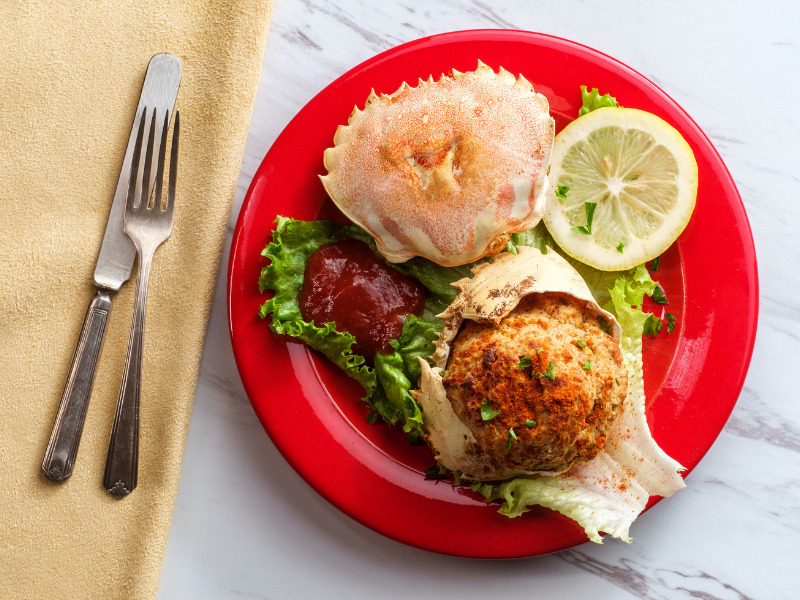
Stuffed crabs (rellenong alimango) are a product of love and patience. Locals sauté the crab meat with tomatoes, onions, spices, eggs, and flour. They then stuff the mixture back into the crab shell before frying. This results in a flavor-packed dish that seafood lovers will surely enjoy.
Binagol
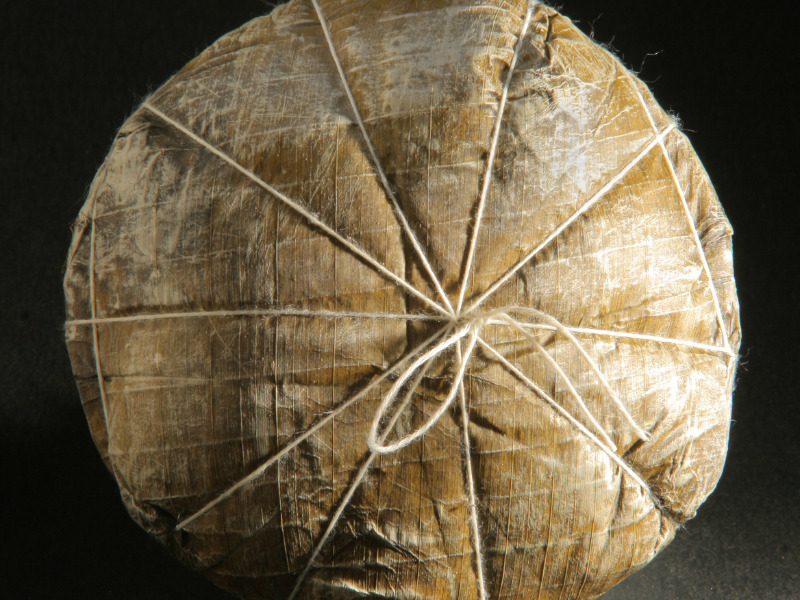
This sweet treat features taro root, sugar, coconut milk, and eggs. Locals place the mixture in a “bagol” (coconut shell). They then cover it with a layer of banana leaves and steam it until it sets. This results in a creamy and sweet delicacy with a hint of earthiness from the taro.
Ube Kinampay
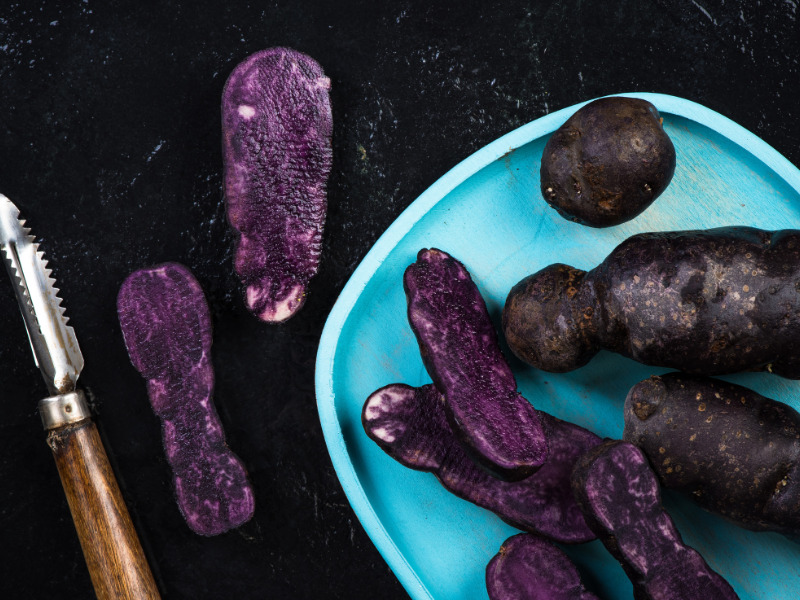
Purple yam (ube) is a common ingredient in Filipino desserts. Bohol’s version, ube kinampay, is one of the best. Locals use it in kakanin or desserts like halo-halo, ice cream, and pastries. Its bright purple color, distinct sweet and nutty flavor, and creamy texture make it a standout.
Bohol, being rich in historical and cultural heritage, is equally rich in culinary traditions. The cuisine is a mixture of flavors influenced by the island’s bountiful land and sea resources, local agriculture, and the Boholanos’ creativity in cooking. Each dish tells a story of its people, heritage, and way of life. When you find yourself in Bohol, be sure to savor these local delicacies and experience the authentic Boholano culinary journey.
Frequently Asked Questions
The Sandugo Festival is celebrated each year in July.
The festival is celebrated to commemorate the historical blood compact or sandugo between the Spanish explorer Miguel López de Legazpi and Bohol’s chieftain Datu Sikatuna in 1565.
Yes, the Sandugo Festival is important to Filipinos and Spaniards because it represents a historic moment of unity and friendship between the two countries.
Sandugo Philippines history can be traced to the blood compact ceremony in 1565 on the island of Bohol, where Spanish explorer Miguel López de Legazpi and Datu Sikatuna, the chieftain of Bohol, symbolically exchanged blood to solidify the bond between Filipinos and Spaniards.
Conclusion
The Sandugo Festival is not just an event but also a colorful salute to unity, tradition, and Bohol’s rich history. Bursting with life for a whole month, it weaves history, art, and culture into an unforgettable Filipino experience.
It’s not just about watching the spectacle— it’s also about tasting Bohol’s food, meeting its people, and witnessing its strong community spirit. With every part of the Sandugo Festival, you become part of Bohol’s vibrant life story. So book that trip, be part of the celebration, and enjoy the Boholano way!
About HICAPS
Over the years, HICAPS has helped bakers and businesses make delicious products by offering ingredients like ChiffonAide Cake Oil, Magic Whizk Whipping Cream, Red Velvet Flavor Emulco, and Instabake Brownie Mix.
HICAPS also provides tools and resources to valued partners, such as the free “How to Increase Your Sales Amidst the Pandemic” E-book and free dealer locator that helps look for baking ingredients near me.
Want more free tips and tutorials? Follow us on Facebook at Hicaps Mktg. Corp. and on YouTube at HicapsTV. Want to be one of our valued partners? Fill this form out. Looking forward to talking to you soon!


